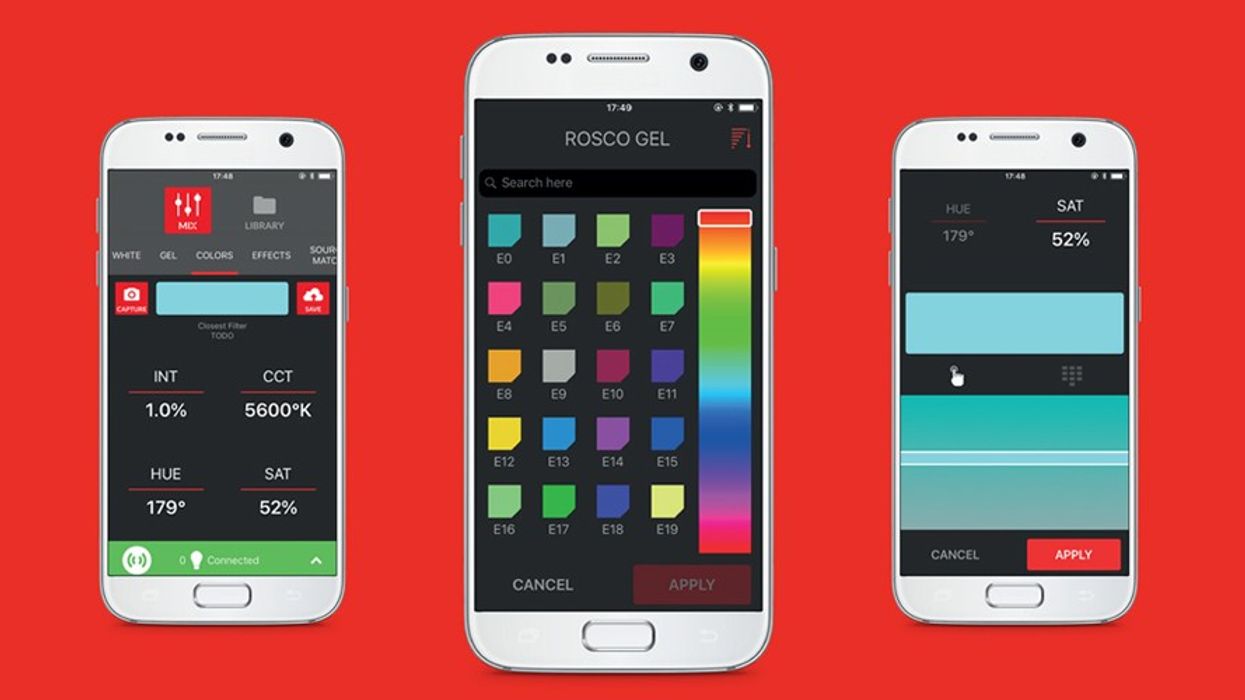Match the Light of Photographs with the Rosco Mix
Take a photo and a color and generate that color light with the Rosco Mix LED units.

When Rosco bought Canadian lighting company DMG Lumiere, the end result was always going to be colorful light units. After all, the company is best known for being one of the premiere light gel manufacturers.
With the LED industry moving toward more colorful light units, it makes sense to bring the two together for a dynamite combination. The initial results of that combination have now been revealed with the Rosco Mix, shipping this summer.
Built around six different LED colors, the Mix line is designed to be ultra versatile and useful in a variety of setups. While the wide array of colors are obviously the main selling point, in reality, many LEDs are largely used for white light, and so it's not an accident that the first feature highlighted is "white light" mode, where you get full green/magenta control of the light. Not only do many LED units have green problems that you need to dial out, you also might want a certain cast to match a practical unit.
The ability to dial the Mix to the precise level of green or magenta you might need to make a match (quickly and in unit) is a huge timesaver.
For instance, if you're shooting in a massive supermarket under fluorescent lights, you might not have the budget to replace all of the overhead bulbs with Kino Flo or Quasar units. Because of this, you might leave them alone and simply match your floor lights to the overheads. The ability to dial the Mix to the precise level of green or magenta you might need to make a match (quickly and in unit) is a huge timesaver.

However, the real premier features of the unit are built around dynamic color controls. On top of the traditional saturation/intensity controls, there's also a mode for taking a photograph of a scene and matching that color with the unit.
The exciting part is the attempt to take the human out of the equation and go directly from sensor (your phone camera) to light source (the mix).
On top of that, there is a mode for matching pre-existing Rosco gels, though it doesn't indicate if you can match them both on Tungsten and Daylight units. A straw gel on a 2K looks much different than a straw on a Joker, for instance, and we assume this is something that can be dialed in by app.

The standard caveats apply. While we can assume that Rosco and DMG Lumiere have done profiling of the iPhone camera to observe how it handles color, the results might not match all the way through the pipeline. For instance, if you shoot a color with your iPhone and dial it up on the Mix, you will likely see a good match to your eye, but the sensor of your main camera might not see it the same way. Some measure of tweaking is needed.
The exciting part is the attempt to take the human out of the equation and go directly from sensor (your phone camera) to light source (the mix), as, sometimes, humans are fallible. You might think something is "pure orange," but then the camera will notice some purple hints that need to be captured and reproduced that might be too subtle for the human eye to catch.

Available in three sizes—the Mini Mix, the SL1 Mix, and the Maxi (which appears to be two SL1 units rigged)–the Mix will be available this summer. Check out the Rosco site for more info and the Adorama site for more Rosco lighting products.
Tech Specs:
Mini Mix
- Size 585 x 205 x 37mm / 23" x 8" x 1.4"
- Weight 2.56 kg / 5.6lbs
- 100W max power draw
- 288 LED (48x6)
- 95 Average CRI, 90 average TLCI
SL1 M
- 1118 x 205 x 37mm /44" x 8" x 1.4"
- 4.18 kg / 9.2 lbs
- 200 Watt max power draw
- 576 LED (96 x 6)
- 95 average CRI, 90 average TLCI












